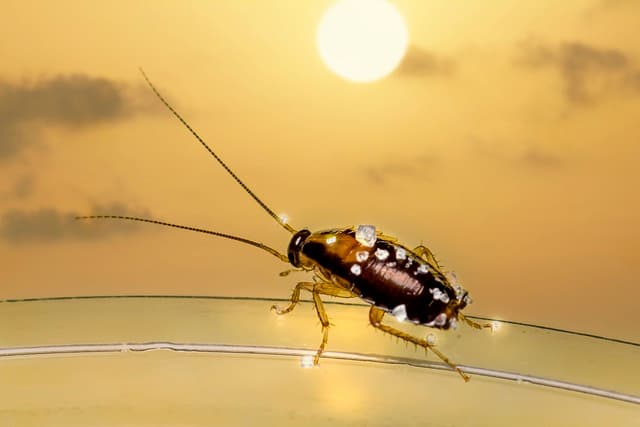The life cycle of cockroaches, which are hardy and usually not welcome in our homes, is both interesting and disturbing. To fight these pests successfully, you need to know how they grow, reproduce, and do well. In this blog post, we’ll look more closely at the lifecycle of cockroaches and explain the different steps they go through.
The Egg
The life cycle of a cockroach starts with the egg stage. The egg boxes that female cockroaches make are called oothecae. Depending on the species, they can hold anywhere from a few to several dozen eggs. Most of the time, these egg cases are brown, oval, and hard to protect the eggs inside. The females stick the oothecae to places where they can’t be seen, like cracks, gaps, or even furniture.
Stage of Nymphs
The young cockroaches that come out of the eggs are called nymphs. Nymphs look like grown-ups, but they are smaller and don’t have wings. Most of the time, they start out white or grey and get darker as they moult. For cockroach babies to grow, they have to shed their exoskeletons several times. During the time when nymphs are changing into adults, they are soft and easily hurt.
The Adults
After a few moults, nymphs turn into adults. At this point, they get wings (if their species has them) and the parts they need to reproduce. Adult cockroaches usually only live for a few months to a couple of years, based on the species and the conditions in which they live. During this time, their main goals are to reproduce and stay alive.
Having children
Cockroaches are well-known for how many babies they can make. They have a process called sexual reproduction in which the males give the females sperm. Female cockroaches keep sperm, which lets them make more than one egg case without mating again and again.
Different species lay eggs at different times and in different numbers. Every few weeks, some cockroaches can make a new egg case that holds dozens of eggs. This way of having babies makes sure that the cockroach population keeps growing, even when things are bad.
How long they live and how they stay alive
Cockroaches are able to stay alive. They have changed over time to be able to live in many different places, even in places that would be bad for most other species. Their toughness comes from the fact that they can eat almost anything, like dead things, glue, and soap.
Cockroaches are also known for how well they can handle pesticides and natural stresses. Some species can live in places where there is a lot of radiation, temperatures that are very hot or very cold, and long times without food or water.
Why it’s important to understand the lifecycle
To get rid of cockroaches effectively, you need to know how they live. Knowing that cockroaches can make a lot of babies quickly and hide their egg cases in hard-to-reach places makes it clear how important it is to clean thoroughly and close off any entry points. Also, knowing that nymphs are weak shows how important it is to use targeted treatments during this time to stop the population from growing.
Stopping and Taking Charge
Good cleanliness is the first step in keeping cockroaches away. Clean your home often, get rid of places where cockroaches can get food, and seal cracks and gaps where they can hide. If you think you have an issue, you should call a pest control service. They can find the species, find places where they hide, and use successful treatments.
In conclusion,
If you want to get rid of cockroaches, it’s important to know how they live and grow. By knowing where they are in their life cycle and how they reproduce, you can take steps to avoid cockroach infestations and, if necessary, call in experts to make sure your home stays cockroach-free. Remember that knowing how to deal with these hardy pests gives you power.
Providing high-quality and effective cockroach exterminations. Cockroach exterminations are undertaken by licensed and insured exterminators that have access to a wide variety of tools available to get rid of the infestation. Our treatments are safe for humans and pets but are highly effective against the most stubborn cockroach infestations
